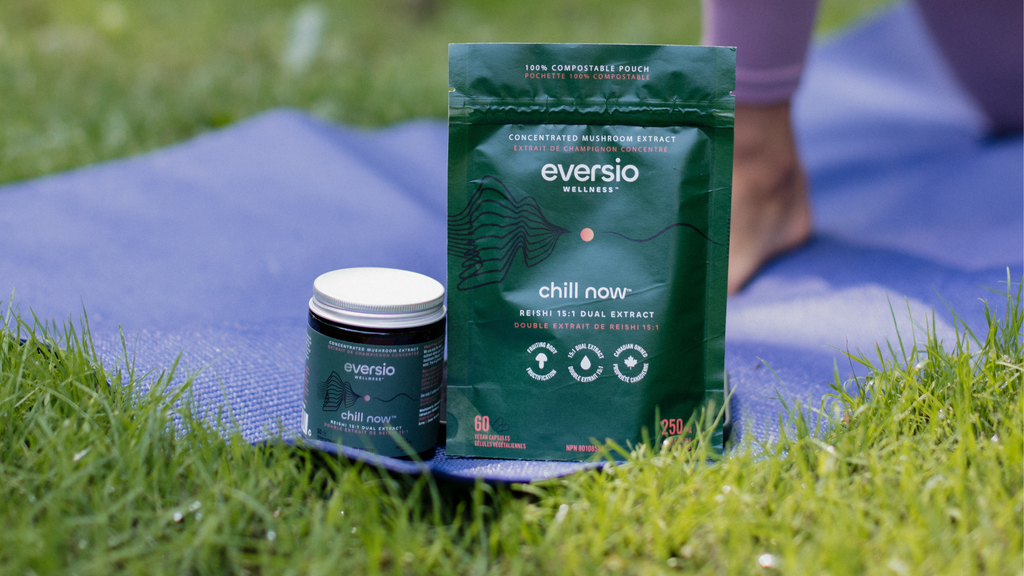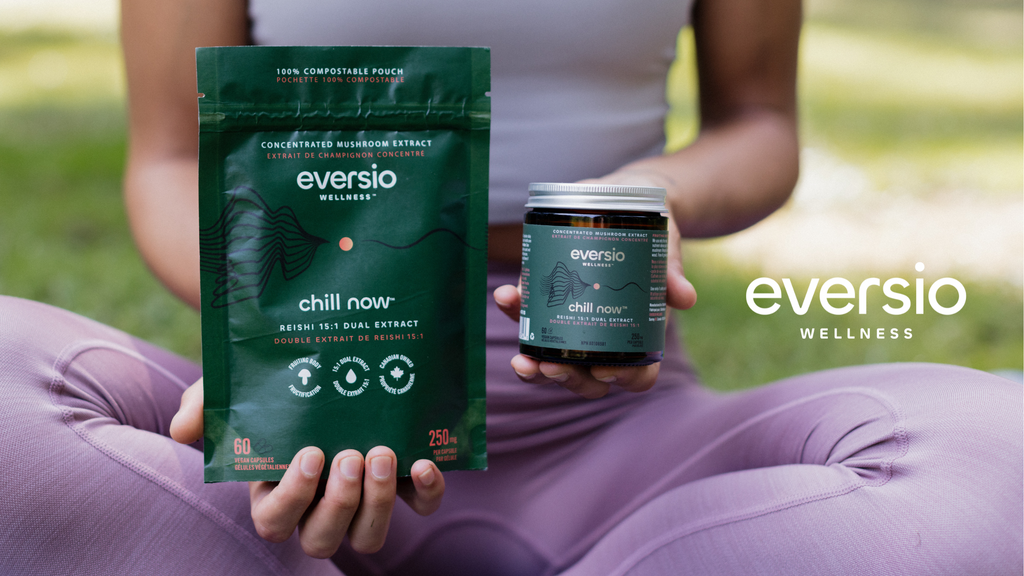As the Northern Hemisphere tilts closest to the sun, marking the longest day of the year, we are greeted with the enchantment of the summer solstice. This celestial event has been celebrated by various cultures for thousands of years, symbolizing life, fertility, and the power of the sun. In herbal medicine, the summer solstice is not just a time to rejoice but also a period of significant transformation, especially in the world of medicinal mushrooms.
These natural healers, nestled in the forests and meadows, have a unique relationship with the sun's journey, making the solstice a pivotal moment for both their growth and their therapeutic potency. These fungi are not only integral to the ecosystem but also to traditional and contemporary healing practices. We will traverse through history, cultural beliefs, and scientific insights to understand how the summer solstice influences the use and effectiveness of these mystical natural remedies.
• What is the Summer Solstice?
• What are Medicinal Mushrooms?
• The Connection Between the Summer Solstice and Medicinal Mushrooms
• How to Incorporate Medicinal Mushrooms into Summer Solstice Celebrations
The Summer Solstice: A Cultural and Historical Perspective
The summer solstice occurs when the Earth's axial tilt is closest to the sun, typically around June 21st in the Northern Hemisphere. This day, celebrated as the official start of summer, is distinguished by the longest period of daylight. Historically, the solstice has been a time of celebration, reverence, and, in some cultures, a moment to align with the natural world.
Cultures across the globe have revered this day, each adding their unique traditions and interpretations. The ancient Egyptians aligned their pyramids with the solstice sunset, while the Chinese celebrated with festivals honouring the earth, femininity, and the yin forces. In Europe, particularly in pagan traditions, the solstice was a time of bonfires and feasting, a celebration of the sun god's peak strength. Stonehenge, the prehistoric monument in England, aligns perfectly with the solstice sunrise, hinting at its significance in ancient times.
These celebrations were not just social events; they were deeply intertwined with the rhythms of nature and agriculture. The solstice signalled the peak of the growing season, a crucial period for both crops and wild herbs. In herbal medicine, this time was often seen as potent for gathering herbs, as the long daylight hours were believed to imbue plants with strong medicinal properties.
Medicinal mushrooms, a cornerstone of traditional medicine in many cultures, were no exception to this. Valued for their healing properties, mushrooms like Reishi, Chaga, and Lion’s Mane were often collected around the solstice. The belief was that during this period, the mushrooms absorbed the sun's energy, enhancing their medicinal qualities. This practice, deeply rooted in the understanding of the natural world, underscores the intimate relationship between the cycles of the earth and the efficacy of natural remedies.
The summer solstice, therefore, was more than just a day of celebration; it was a symbol of life, growth, and harmony between the earth and the cosmos.
Medicinal Mushrooms: An Overview
Medicinal mushrooms have been a cornerstone in traditional healing practices across the world. Among the most celebrated are Reishi, known for its immune-boosting properties; Chaga, a powerhouse of antioxidants; and Lion’s Mane, celebrated for its cognitive-enhancing abilities. Each of these fungi holds a unique place in herbal medicine, offering a range of benefits from stress reduction to anti-inflammatory effects.
Reishi, often termed the “Mushroom of Immortality” in Eastern traditions, is believed to support longevity and overall health. Chaga, with its rich melanin content, is known for protecting the skin and DNA from sun damage, making it particularly relevant during the sun-rich solstice period. Lion’s Mane, with its nerve growth factors, supports brain health, and is often used to enhance focus and memory.
While these mushrooms are available year-round, traditional wisdom suggests that their medicinal qualities are heightened during certain seasons. The summer solstice, with its extended daylight and heightened solar energy, is believed to amplify the medicinal compounds in these mushrooms.
The Connection Between Summer Solstice and Medicinal Mushrooms
The relationship between the summer solstice and medicinal mushrooms is steeped in both folklore and emerging scientific inquiry. Traditionally, it was believed that mushrooms harvested during the solstice were more potent. This belief stems from the understanding that the sun’s energy, at its peak, imbues the mushrooms with stronger healing powers.
Modern science provides some backing to these beliefs. Studies have shown that environmental factors, including sunlight and temperature, can influence the concentration of bioactive compounds in plants and fungi. For example, polysaccharides in Reishi, known for their immune-boosting properties, may vary in concentration depending on the light exposure and temperature [1].
This interplay between the sun's energy and mushroom growth is not just limited to their medicinal properties. The solstice also influences their life cycle. The longer daylight hours and warmer temperatures can accelerate the growth and sporulation of certain fungi, making the solstice period critical for both mushroom foragers and cultivators.
Historical texts and oral traditions from various cultures often mention the harvesting of medicinal mushrooms around the summer solstice. These practices were not mere coincidences but were based on generations of observations, linking the sun’s cycle to the potency of these natural remedies.
Modern Practices and Beliefs
In contemporary times, the intrigue surrounding medicinal mushrooms and the summer solstice has not waned. Modern herbalists and practitioners of alternative medicine often echo the sentiments of ancient traditions, advocating for the collection and use of mushrooms during this time.
The resurgence of interest in natural and holistic healing has brought these practices to the forefront. Many modern-day herbalists organize solstice gatherings, where participants forage for medicinal mushrooms and learn about their uses. These events often combine traditional knowledge with contemporary research, providing a comprehensive understanding of the mushrooms' health benefits.
Moreover, the summer solstice is increasingly seen as a time to reconnect with nature. Practitioners often use this period to emphasize the importance of sustainable foraging and the ethical harvesting of medicinal plants and fungi. This respect for nature and its cycles is a fundamental tenet of modern herbal medicine.
How to Incorporate Medicinal Mushrooms into Summer Solstice Celebrations
As we embrace the warmth and vitality of the summer solstice, incorporating medicinal mushrooms into our celebrations can be a meaningful way to connect with nature and enhance our well-being. Whether through culinary creations, wellness rituals, or mindful practices, these natural treasures offer a unique blend of tradition and health.
Culinary Delights with Medicinal Mushrooms
For those interested in adding a healthy twist to their solstice festivities, including medicinal mushrooms in recipes is a delightful approach. Reishi, with its earthy flavour, can be infused into herbal teas or broths, offering a calming effect perfect for evening gatherings. Chaga makes for an excellent addition to morning smoothies or coffee substitutes, providing a boost of antioxidants. Lion’s Mane, with a taste reminiscent of seafood, can be sautéed with herbs and served as a gourmet side dish, promoting cognitive health.
Wellness Rituals and Practices
The summer solstice is an opportune time to engage in wellness rituals that incorporate medicinal mushrooms. Creating a Reishi tincture, steeped during the solstice, can be a powerful way to harness the day’s energy. Applying Chaga-infused skincare products can celebrate the sun while protecting against its rays. Meditative practices, where one reflects on personal growth while consuming a Lion’s Mane elixir, can align the mind and body with the season's transformative nature.
Ethical Foraging and Mindfulness
For those who wish to forage for mushrooms, the solstice offers a perfect opportunity to practice mindfulness and respect for nature. It’s crucial to gather mushrooms sustainably, ensuring to not overharvest and to leave smaller specimens to grow. Understanding the local ecosystem and seeking guidance from experienced foragers can deepen the connection to the environment and ensure a safe and responsible harvest.
Embracing the Sun with Medicinal Mushrooms
The summer solstice, with its abundance of light and life, offers a perfect moment to reflect on our relationship with nature and its bountiful remedies. Medicinal mushrooms, deeply rooted in both history and modern wellness practices, provide a unique bridge between the ancient and the contemporary, between science and tradition. By understanding their role in herbal medicine and integrating them into our solstice celebrations, we not only honour their healing properties but also connect with the rhythms of the natural world.
Let us remember that the significance of the summer solstice in herbal medicine extends beyond the scientific aspects of mushrooms. It embodies a deeper understanding of the interconnectedness of all things - the sun, the earth, and ourselves. By embracing these natural gifts with respect and mindfulness, we continue a tradition that has spanned centuries, fostering health, harmony, and a profound appreciation for the world around us.
Related Articles
• Fireworks for Your Immune System: Medicinal Mushrooms
• 4 Mushroom Supplements to Boost Your Health Routine
• World Health Day: Immune-Boosting Medicinal Mushrooms
References
[1] Wachtel-Galor S, Yuen J, Buswell JA, et al. Ganoderma lucidum (Lingzhi or Reishi): A Medicinal Mushroom. In: Benzie IFF, Wachtel-Galor S, editors. Herbal Medicine: Biomolecular and Clinical Aspects. 2nd edition. Boca Raton (FL): CRC Press/Taylor & Francis; 2011. Chapter 9.Available from: https://www.ncbi.nlm.nih.gov/books/NBK92757/



Comments (0)
Back to Wellness Blog